By Christopher Miskimon
Lieutenant Commander Kakuishi Takahashi looked down on his targets from 14,000 feet. They were long, narrow forms with flat decks and large funnel stacks, the American aircraft carriers USS Lexington and Yorktown. It was 11 am on May 8, 1942, and the Battle of the Coral Sea was in full swing. The Japanese aviator was in command of a strike mission determined to sink the enemy ships. Takahashi’s force included both torpedo and dive bombers escorted by Zero fighters. Thinking quickly, he devised a plan to hit the Americans with a coordinated assault by both types of attack planes, a technique the Americans themselves were still struggling to work out.
The 18 torpedo planes were sent down to 4,000 feet at 11:09. They were accompanied by all 18 Zeros, with the assumption they would need fighter cover more than the bombers. The torpedo plane commander was given authority to divide his aircraft between the two enemy carriers as he saw fit. The 33 bombers were moved down to 10,000 feet and deployed in V-shaped groups. Once the torpedo planes began their attacks the bombers would dive in, giving the Americans near-simultaneous attacks to deal with. At the last minute Takahashi would divide the bombers between Lexingtonand Yorktown.
 The attack went in; Japanese aircraft maneuvered for their killing blows while American fighters twisted and turned to intercept them. Black puffs of smoke dotted the air as antiaircraft fire exploded. The carriers turned and curved through the water trying to avoid the maelstrom of bombs and torpedoes that fell upon them. Lexington’s captain, Frederick C. “Ted” Sherman, was an expert ship handler, so skilled he rarely needed tugboats to help dock his ship. He sent his ship back and forth in an effort to avoid torpedoes inbound from both directions. Sherman’s deft orders foiled the tracks of the first five torpedoes, but six more flew in.
The attack went in; Japanese aircraft maneuvered for their killing blows while American fighters twisted and turned to intercept them. Black puffs of smoke dotted the air as antiaircraft fire exploded. The carriers turned and curved through the water trying to avoid the maelstrom of bombs and torpedoes that fell upon them. Lexington’s captain, Frederick C. “Ted” Sherman, was an expert ship handler, so skilled he rarely needed tugboats to help dock his ship. He sent his ship back and forth in an effort to avoid torpedoes inbound from both directions. Sherman’s deft orders foiled the tracks of the first five torpedoes, but six more flew in.
One Japanese torpedo bomber blew up as an American Douglas SBD Dauntless dive bomber riddled it with gunfire. The explosion caused another to abort its attack, leaving four more planes. They dropped their fish into the water from only 700 yards. The planes flashed by Lexington, one succumbing to a torrent of antiaircraft fire. It crashed into the sea just ahead of the ship’s bow. Lexington’s luck had run out, however. Two torpedoes crashed into the port side, damaging some of the ship’s gasoline tanks and causing fumes to spread. This was due to an unconsidered design flaw, a result of the ship having been converted from a battlecruiser hull rather than designed from the keel up as a carrier.
The incoming Japanese bombers scored two hits as well, one of which started several fires. The crew began fighting the blazes, and things seemed to be under control when, at 12:47, a massive explosion caused by gas fumes rocked the ship. The battle for the survival of the Lexington was now underway; it was a battle her crew would ultimately lose. The proud carrier would be scuttled by the destroyer Phelpsshortly before 8 pm, after more than 2,700 of her crew were rescued. Some 216 sailors died.
The Lexington’s legacy was much more than her loss at the Coral Sea. She and her crews gave years of service to the United States and helped develop carrier aviation. Many of the lessons learned from the ship, including those of her loss, would help guide future carrier development, from air tactics to ship design. Lexington’s proud story is well told in Phil Keith’s newest book, Stay the Rising Sun: The True Story of USS Lexington, Her Valiant Crew, and Changing the Course of WWII (Zenith Press, Minneapolis, MN, 2015, 234 pp., photographs, appendices, bibliography, index, $30.00, hardcover).
The entire story of Lexington’s service is told, with a focus on her vital service in World War II. Everything, from her construction to her sinking, including peacetime humanitarian missions, participation in fleet training exercises, and early wartime service prior to the Coral Sea, is recounted in clear, flowing prose that keeps the reader engaged. Using numerous resources, the author is able to combine them into a seamless narrative, which relates the individual tales of officers, pilots, and sailors in a way that effectively supports the overall story of Lexington. The history of a ship is really the combined stories of her crewmembers. The success of this book is in its combining of these accounts into a whole that is indeed greater than the sum of its parts, an entertaining and accurate portrayal of the war in the Pacific in early 1942.
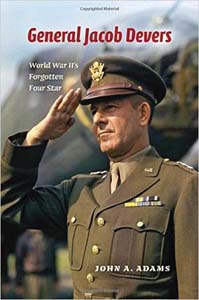 General Jacob Devers: World War II’s Forgotten Four Star (John A. Adams, University of Indiana Press, Bloomington, 2015, 456 pp., maps, table, notes, bibliography, index, $45.00, hardcover)
General Jacob Devers: World War II’s Forgotten Four Star (John A. Adams, University of Indiana Press, Bloomington, 2015, 456 pp., maps, table, notes, bibliography, index, $45.00, hardcover)
Jacob Devers is the least known of General Dwight D. Eisenhower’s army group commanders after Omar Bradley and Bernard Montgomery, but his contributions are no less impressive. Devers had a “can do” attitude and remarkable determination. In 1941, Army Chief of Staff George C. Marshall, who had an eye for talent, selected Devers from a position of relative obscurity in the Panama Canal Zone to assist in preparing the Army for war. Devers showed his abilities by preparing the Army for rapid expansion and training, along with heading the Armored Force in such a way that it was better armed for combat. He later took command of the 6th Army Group, which invaded Southern France and ended the war on the Austrian border.
This is a detailed look at a relatively unknown but effective leader and his war at the army group level. The level of detail is good, a requirement for any book dealing with such a lofty subject. It effectively tells the story of how Devers overcame the challenges of such a command and achieved a greatness that has gone largely unheralded until now.
 Adolf Hitler: The Curious and Macabre Anecdotes (Patrick Delaforce, Fonthill Media, Stroud, UK, 2015, photographs, notes, $19.95, softcover)
Adolf Hitler: The Curious and Macabre Anecdotes (Patrick Delaforce, Fonthill Media, Stroud, UK, 2015, photographs, notes, $19.95, softcover)
The details of Hitler’s life are often lost in the myths and stories that surround him. He is rightly seen as one of history’s most horrid villains, but he was not born with a swastika on his arm. As a boy he once made the girls in his school laugh during a ceremony by brushing at a nonexistent mustache when they looked at him. In 1923, he smuggled cash from the sales of Mein Kampfin a steamer trunk aboard a train from Switzerland like a common criminal.
It is easy to discount Hitler and other Nazis as purely insane scoundrels, but this is an easy answer that does not require the reader to have to think about human nature and evil. The author tries to show the path Hitler took to eventual infamy with a series of anecdotes about his life and those close to him. Some of the stories of his youth are rather innocent, while others clearly point to his extreme views, callousness, and lust for power. The book is able to reveal all this without showing any appearance of sympathy for the dictator, always a risk when trying to show the full story of a wicked man, rather than just brand him as bad.
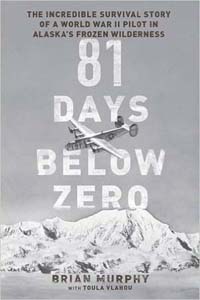 81 Days Below Zero: The Incredible Survival Story of a World War II Pilot in Alaska’s Frozen Wilderness (Brian Murphy, Da Capo Press, Boston, MA, 2015, 256 pp., map, photographs, bibliography, index, $24.99, hardcover)
81 Days Below Zero: The Incredible Survival Story of a World War II Pilot in Alaska’s Frozen Wilderness (Brian Murphy, Da Capo Press, Boston, MA, 2015, 256 pp., map, photographs, bibliography, index, $24.99, hardcover)
Leon Crane was a city boy, brought up on the streets of Philadelphia. Growing up, he had learned the ways of survival amid neighborhoods of rowhouses and local toughs. It could never have prepared him for the cards fate dealt him in December 1943. Now a young pilot stationed at Ladd Field, Alaska, he was scheduled for a training mission on the morning of December 21. After staying up late into the night playing cards, Leon snatched a few hours’ sleep before rising for his flight. The young aviator was part of the crew of a Consolidated B-24 Liberator bomber named Iceberg Inez.It was a difficult environment for flying, but there was a war on and the crew had a job to do.
The B-24 took off from the airfield as planned. Initially the training flight went well. Then a sudden failure sent the plane into a spin. The pilot recovered only to have it happen again. Iceberg Inezwas going down. Leon Crane and several others bailed out, but Leon landed alone in the snow some two miles from where his plane crashed and exploded. He had a small book of matches, his parachute, a Boy Scout knife, and the clothes on his back. It was only the beginning of Leon’s ordeal. The freezing temperatures, wind, snow, and ice all conspired to kill him. The young pilot would fight through, however, spending 12 weeks in the frozen wasteland before walking out on his own.
Leon Crane’s amazing story is recounted in great detail. The author relates the young aviator’s harrowing tale in smooth prose, which beckons the reader to continue reading. There are many survival stories of airmen and sailors adrift at sea and how they beat the odds. This story reveals how one flyer endured an experience just as extreme and lived to tell about it.
 Flying Warbirds: An Illustrated Profile of the Flying Heritage Collection’s Rare WWII-era Aircraft (Cory Graff, Zenith Press, Minneapolis, MN, 2015, 240 pp., photographs, index, $40.00, hardcover)
Flying Warbirds: An Illustrated Profile of the Flying Heritage Collection’s Rare WWII-era Aircraft (Cory Graff, Zenith Press, Minneapolis, MN, 2015, 240 pp., photographs, index, $40.00, hardcover)
The Flying Heritage Collection is a private museum containing some of the rarest aircraft in the world, with the stated goal of returning every one of them to flying condition. Located in Everett, Washington, the museum allows visitors to view planes that otherwise require a trip around the world to see. This new book allows those who cannot get to the museum to see them in vivid color photographs with accompanying text giving the background of each one, both in general for that type and the specific history of the plane in the collection.
This coffee table book uses each chapter to look at a pair of aircraft that shared some significant detail. In some cases that detail is that they met in combat, including some of the classic air battles of the war, such as the Battle of Britain and the combat of the Flying Tigers in China. While the text is informative and well done, the photographs make this book stand out. Photos of each plane are complemented with period images of the aircraft in service.
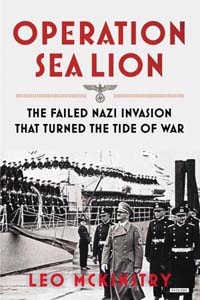 Operation Sea Lion: The Failed Nazi Invasion That Turned the Tide of War (Leo McKinstry, Overlook Press, New York, 2014, 392 pp., photographs, notes, bibliography, index, $32.50, hardcover)
Operation Sea Lion: The Failed Nazi Invasion That Turned the Tide of War (Leo McKinstry, Overlook Press, New York, 2014, 392 pp., photographs, notes, bibliography, index, $32.50, hardcover)
The summer of 1940 was among the darkest days in the history of Great Britain. World War II was in full swing. France was defeated, and Britain stood alone against the might of Nazi Germany. The German high command conceived a two-part operation to defeat the British. First, an air assault would soften the island nation’s defenses, and then an invasion by ground forces would complete the victory, leaving Hitler triumphant. Such a success would have paved the way for the possibility of a defeated Soviet Union and an eventual confrontation with the United States.
It did not happen that way, thanks to the herculean effort of Britain’s military forces. The Germans made massive preparations for an amphibious assault on Britain, gathering ships and barges to get their army across the English Channel. The Luftwaffe filled the sky with aircraft to knock the Royal Air Force out of the war and destroy British defensive capabilities. All this proved for naught; the British military managed to thwart the Nazis at every turn. The Royal Air Force maintained an air defense despite the enemy onslaught. British citizens were organized into ad hoc fighting units, and even the sea was turned against the Germans by using fuel to light its surface afire.
Sea Lion is frequently mentioned in histories of the war but rarely is it given such in-depth attention. Detailed accounts of what occurred on both sides give the reader a thorough understanding of Nazi Germany’s first real defeat of World War II.
 The Tiger Project: A Series Devoted to Germany’s World War II Tiger Tank rews—Book Three (Dr. Gunter Polzin, Schiffer Books, Atglen, PA, 136 pp., maps, photographs, index, $49.99, hardcover)
The Tiger Project: A Series Devoted to Germany’s World War II Tiger Tank rews—Book Three (Dr. Gunter Polzin, Schiffer Books, Atglen, PA, 136 pp., maps, photographs, index, $49.99, hardcover)
The Tiger tank still captivates readers 70 years after it fired its last shot in combat. Despite its shortcomings, the Tiger was long on firepower and armor protection, enabling it to excel in the defensive battles Germany fought during the final two years of the war. In the hands of a well-trained crew, the Tiger could achieve very lopsided victories against enemy armor.
This book is part of an ongoing series to show the experiences of these panzer crewmen. This volume focuses on Heavy Tank Battalion 503, which fielded both the Tiger I and II models. It began its war on the Eastern Front, transitioned to France to resist the Allied invasion at Normandy, and ended its war in Hungary in 1945. The author was a member of the battalion’s 2nd Company, making the book an authentic account of the unit’s time at war. Schiffer Books excels at such detailed and focused books.
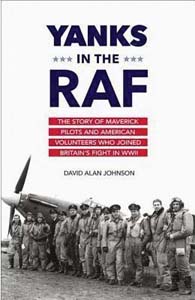 Yanks in the RAF: The Story of Maverick Pilots and American Volunteers Who Joined Britain’s Fight in WWII (David Alan Johnson, Prometheus Books, Amherst, NY, 2015, 290 pp., photographs, notes bibliography, index, $25.00, hardcover)
Yanks in the RAF: The Story of Maverick Pilots and American Volunteers Who Joined Britain’s Fight in WWII (David Alan Johnson, Prometheus Books, Amherst, NY, 2015, 290 pp., photographs, notes bibliography, index, $25.00, hardcover)
The United States initially stayed out of World War II; it was content to sell weapons, equipment, and resources but stopped short of committing troops. With Great Britain in desperate straits, this did not sit well with some Americans, however. Before long American pilots were getting to England, often sneaking across the border into Canada, much as their fathers had done in World War I. Once there they volunteered to fight for the British. Their reasons for doing so varied; some simply wanted adventure and excitement in the age-old way of young men. Others were more fervent, wanting to strike a blow against fascism.
Whatever their reason, they soon found themselves fighting alongside their British brethren. The Americans were formed into three distinct units known as the Eagle Squadrons. After overcoming the usual difficulties between allies from different cultures, these men went on to defend Britain and take part in the Dieppe Raid. Eventually, after America entered the war, they were repatriated into the U.S. Army Air Corps, using their experience to prepare American pilots for the war.
Written in clear prose with an excellent eye for detail, this book is an interesting look at a relatively small group of men who made an invaluable contribution to the war effort. There are many good photographs showing the pilots in service, and many of their personal accounts are used to give the book substance. The author keeps the reader interested and turning pages from beginning to end.
 Ferdinand and Elefant Tank Destroyer (Thomas Anderson, Osprey Publishing, Oxford, UK, 2015, 256 pp., photographs, index, $34.95, hardcover)
Ferdinand and Elefant Tank Destroyer (Thomas Anderson, Osprey Publishing, Oxford, UK, 2015, 256 pp., photographs, index, $34.95, hardcover)
When it came to tank destroyers during World War II, the German Army had the biggest, most powerful, and in many ways most successful designs. Among the most effective of all the German tank-killing vehicles were the Ferdinand and its derivative, the Elefant. Armed with the potent 88mm L/71 cannon, these heavily armored brutes could destroy any Allied tank from a distance. Their basic design was derived from the Tiger chassis, enabling the vehicles to carry heavy frontal armor. Like other super-heavy German armored vehicles, however, they suffered from limited mobility and an unreliable drivetrain that strained under their considerable weight.
Only 90 Ferdinands were built, only enough to equip two units with them in time for the Battle of Kursk. From there the Ferdinands continued fighting on the Eastern Front until they were no longer mechanically sound. They were then shipped back to Germany to be refitted and improved into the Elefant design. A small number were sent to Italy; one of them was captured by the U.S. Army and still exists today as a museum exhibit. Still, most of them ended the war on the Eastern Front.
The vast amount of technical data in this volume gives readers as thorough an education in the design as they could want. The numerous illustrations show the tank destroyer’s progression from the proving grounds to the factory and then the battlefield. Organizational charts show how the units were formed and equipped, giving a complete view of a unique and rare vehicle.
 Rescue at Los Banos: The Most Daring Prison Camp Raid of World War II (Bruce Henderson, William Morrow Books, New York, 2015, 384 pp., maps, photographs, appendices, bibliography, index, $27.99, hardcover)
Rescue at Los Banos: The Most Daring Prison Camp Raid of World War II (Bruce Henderson, William Morrow Books, New York, 2015, 384 pp., maps, photographs, appendices, bibliography, index, $27.99, hardcover)
The war in the Philippine Islands was drawing to a close in February 1945. American forces, bolstered by Filipino resistance fighters, were steadily pushing the Japanese back. This would seem to be good news for the 2,146 prisoners, mostly Americans, being held at the Los Banos internment camp. These civilians had suffered horribly at the hands of their captors since Japanese forces had overrun the islands in 1942. Now, with the possibility of liberation beckoning, a final threat loomed; the defeated Japanese might execute the Americans or simply let them starve.
A daring rescue mission was planned using paratroopers of the 11th Airborne Division. A scouting force of American and Filipino fighters would approach the camp and mark a drop zone. After that a company of paratroopers would land and seize the camp. Meanwhile, other U.S. soldiers would approach the camp across a lake using enough amphibious tractors to carry the prisoners and troops together. Finally, a combined force of infantry and tanks would advance nearby, diverting Japanese attention.
Using numerous personal accounts and interviews, the book reads almost like a novel, pulling the reader into the story. The prisoners’ struggle for survival takes up the first part of the book with their rescue filling the rest. This provides an excellent background to the need for the rescue and gives cause for pride to the rescuers.
New and Noteworthy
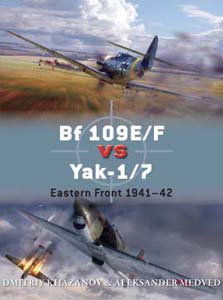 Bf 109E/F vs Yak-1/7: Eastern Front 1941-42 (Dmitriy Khazanov and Aleksander Medved, Osprey Publishing, 2015, $18.95, softcover) The skies over the Soviet Union belonged to Germany at the beginning of the war. A year later the pilots of the Red Air Force were starting to hold their own.
Bf 109E/F vs Yak-1/7: Eastern Front 1941-42 (Dmitriy Khazanov and Aleksander Medved, Osprey Publishing, 2015, $18.95, softcover) The skies over the Soviet Union belonged to Germany at the beginning of the war. A year later the pilots of the Red Air Force were starting to hold their own.
What the RAF Airman Took to War (Bill Howard, Shire Publications, 2015, $12.95, hardcover) British flyers took a myriad of items, both issued and personal, into battle. This book selects many of the more interesting objects and tells the story behind each.
The General and the Genius: Groves and Oppenheimer, the Unlikely Partnership That Built the Atom Bomb (James Kunetka, Regnery History, 2015, $29.99, hardcover) These two men were very different, almost opposites. However, they were able to collaborate in creating a fearsome new weapon to end the war.
The Boys Who Challenged Hitler (Phillip Hoose, Farrar Straus Giroux, 2015, $19.99, hardcover) A group of teenaged Danish boys, angry that their nation failed to resist the Nazis, decided to act on their own. Their acts of sabotage helped to spur a larger resistance movement.
 Where the Iron Crosses Grow: The Crimea 1941-44 (Robert Forczyk, Osprey Publishing, 2014, $25.95, hardcover) This portion of the Eastern Front saw horrible fighting, even including naval forces. The author uses research material never before translated into English.
Where the Iron Crosses Grow: The Crimea 1941-44 (Robert Forczyk, Osprey Publishing, 2014, $25.95, hardcover) This portion of the Eastern Front saw horrible fighting, even including naval forces. The author uses research material never before translated into English.
Himmler: A Photo History of the Reichführer-SS (Max Williams, Fonthill Media, 2015, $65.00, hardcover) These 768 pages delve into the life and imagery of one of history’s most reviled figures in a thorough look at his life using photographs.
The Purge of the Thirtieth Division (Maj. Gen. Henry Dozier Russell, Naval Institute Press, 2015, $59.95, hardcover) This is a reprint of a World War II-era book by a National Guard officer who wanted to expose the regular Army’s replacement of Guardsmen with active officers to promote their own agenda. It takes an in-depth look at the 1940-41 Army maneuvers and buildup of the Army as a whole.
Race to the Rhine: Liberating France and the Low Countries (Leo Marriott and Simon Forty, Casemate Publishers, 2015, $29.95, hardcover) This book covers World War II in northwestern Europe. It is a photobook with many good maps and diagrams to accompany the photographs.
World War II in Secret: The Hidden Conflict 1939 to 1945 (Gavin Mortimer, Zenith Press, 2015, $30.00, hardcover) This is the story of the war told through its secrets, covert missions, and classified technology. The book is well illustrated with many charts and maps to complement the text.
The SAS in World War II (Gavin Mortimer, Osprey Publishing, 2015, $12.95, softcover) This is the complete story of the elite British Special Forces organization during the war. Much of the book’s material was drawn from the Regimental Archives of the Special Air Service.
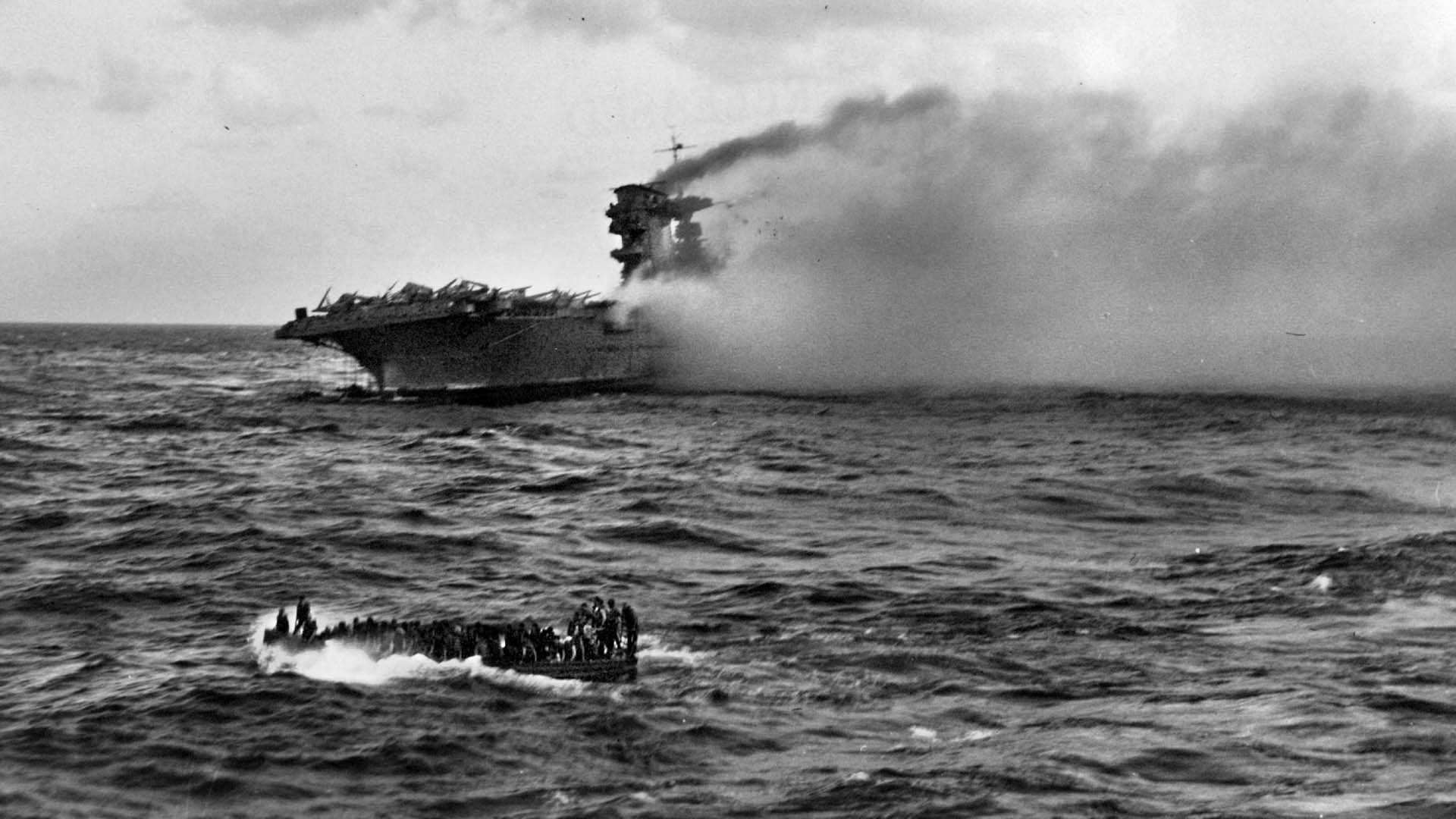
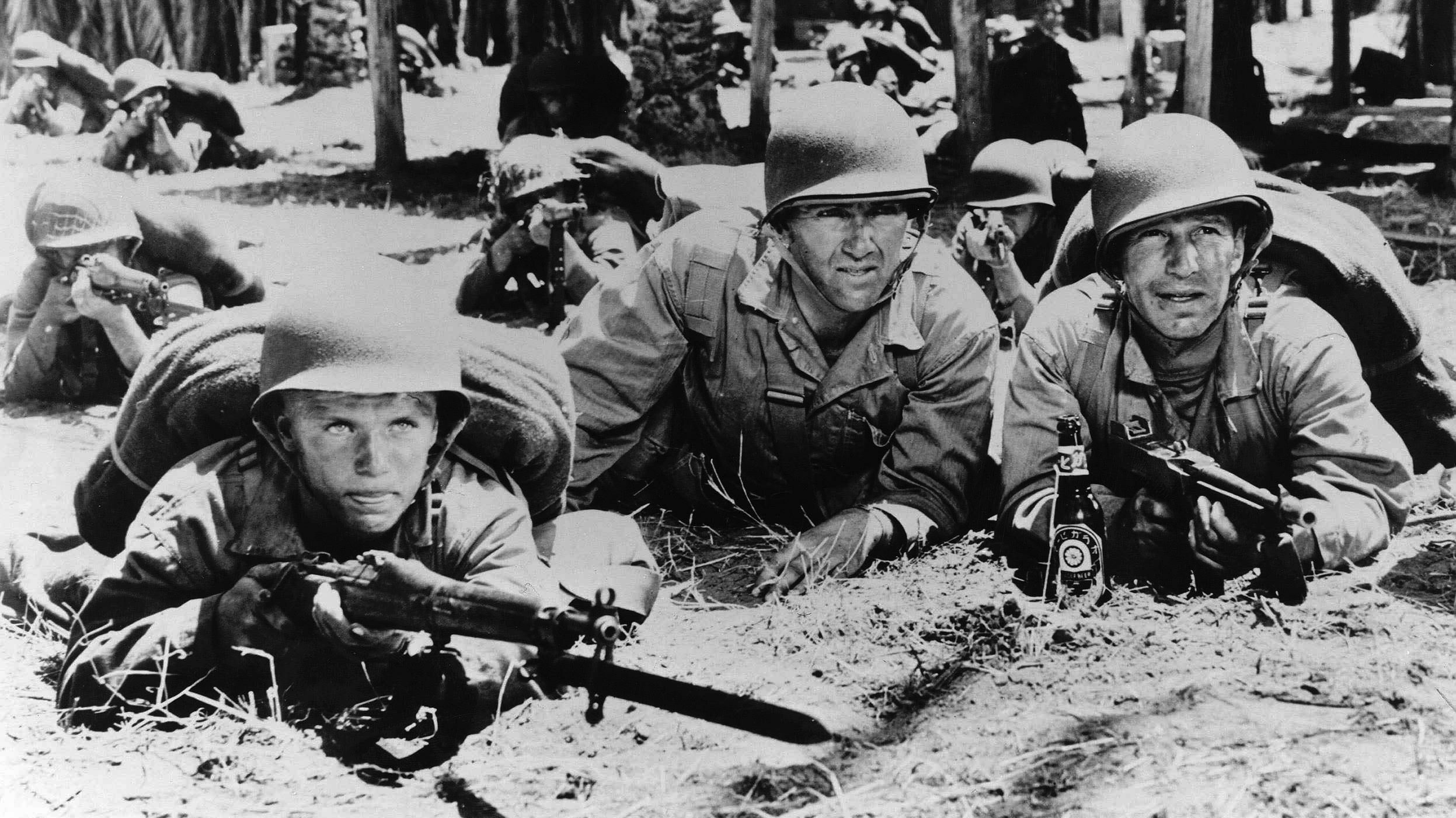
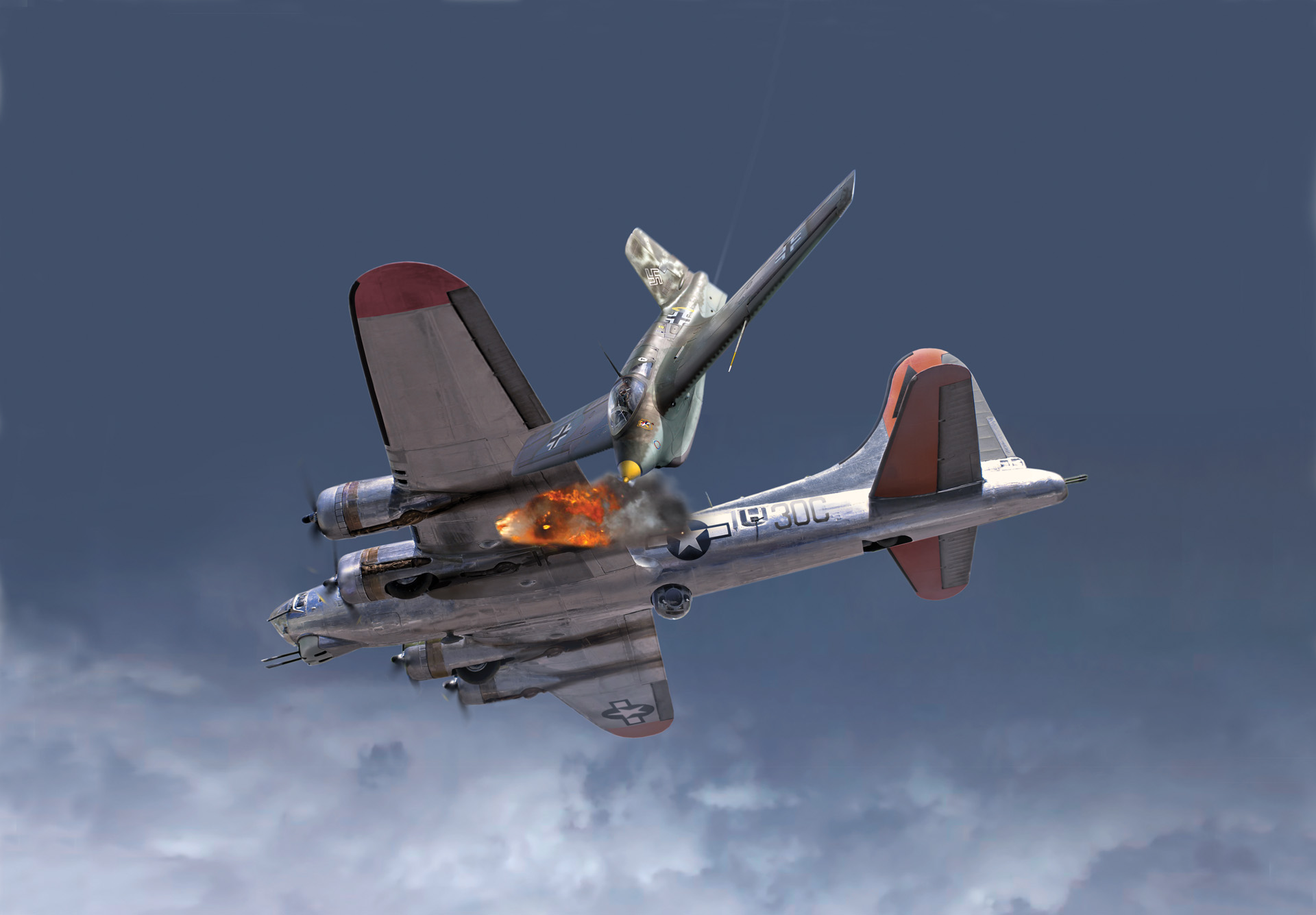
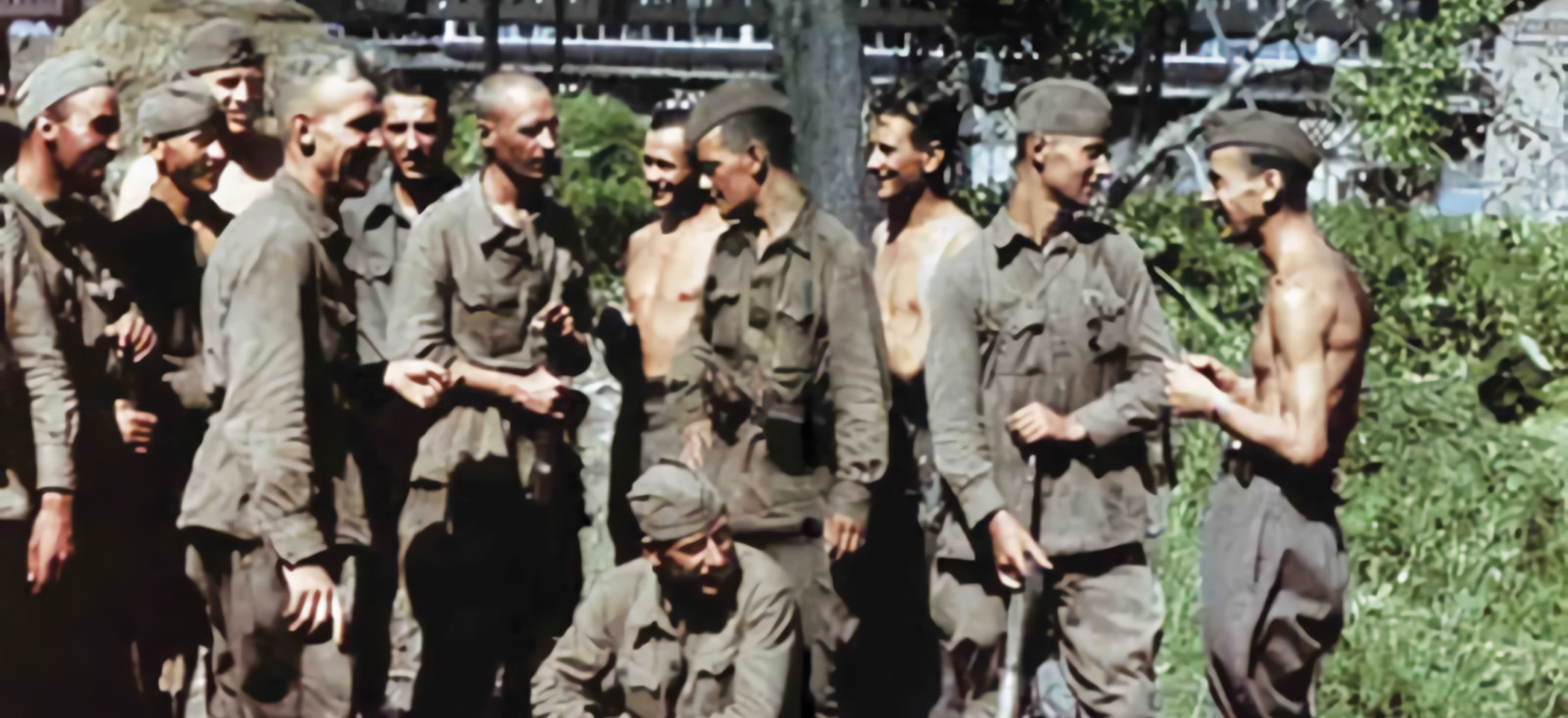
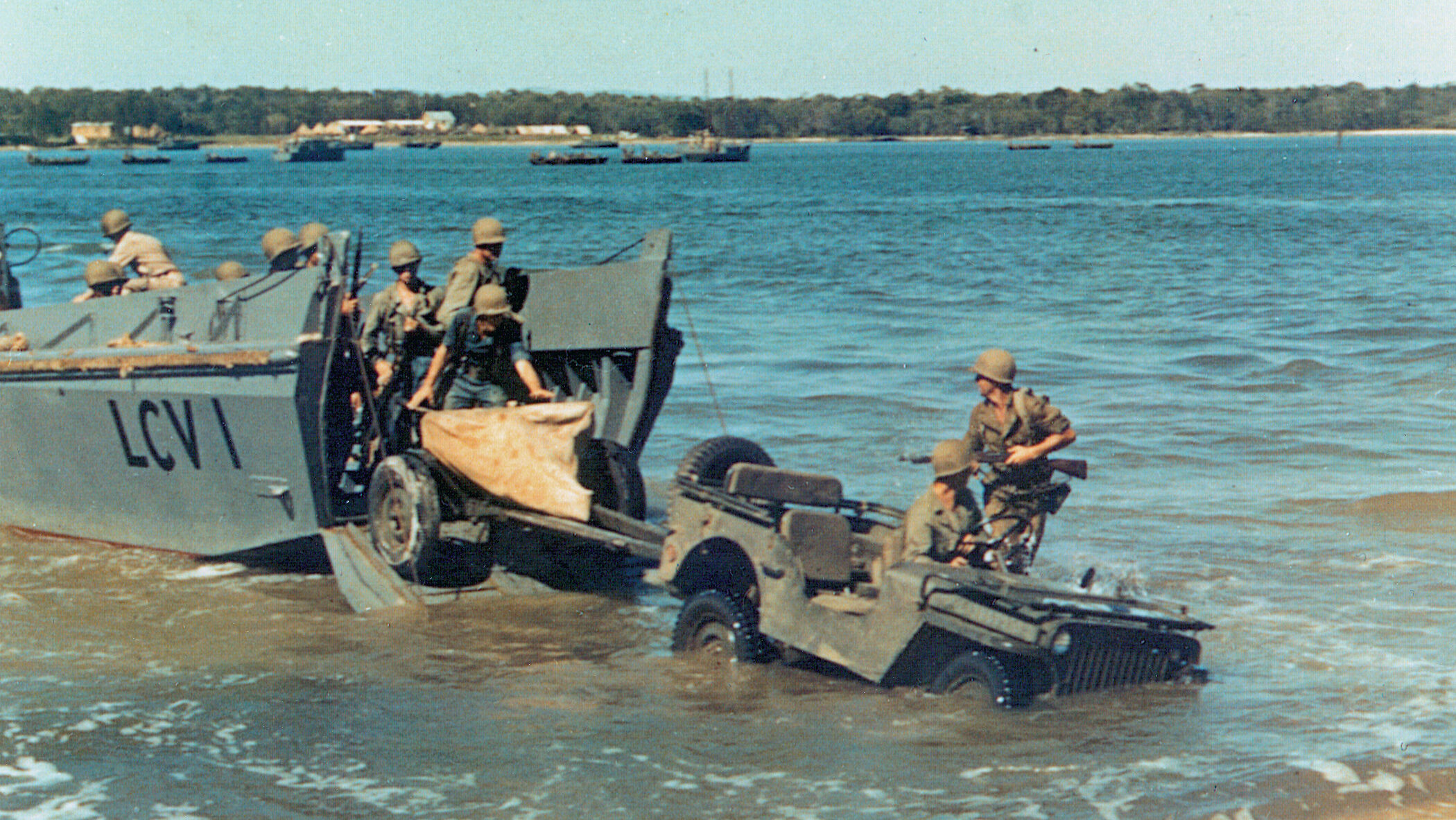
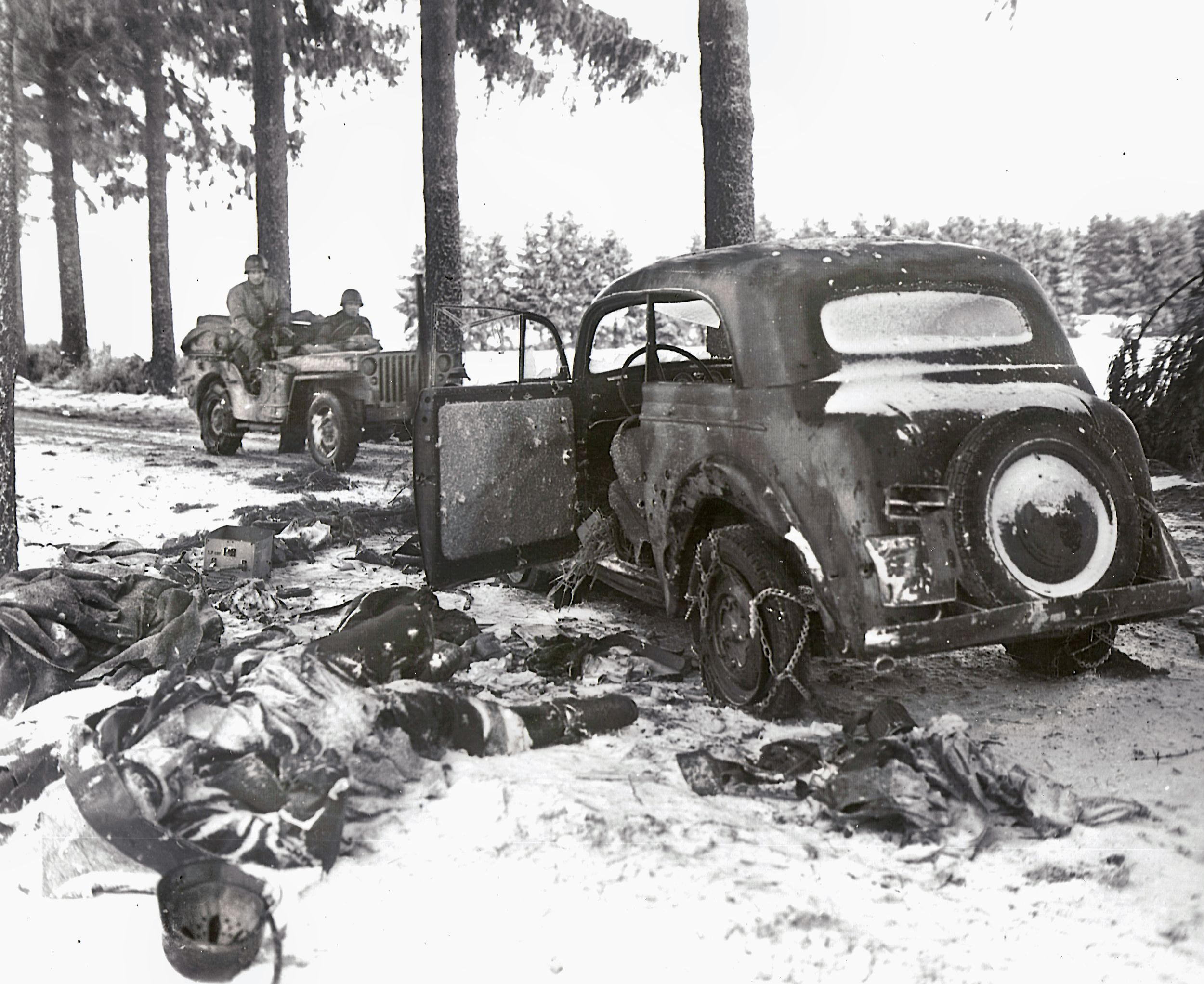
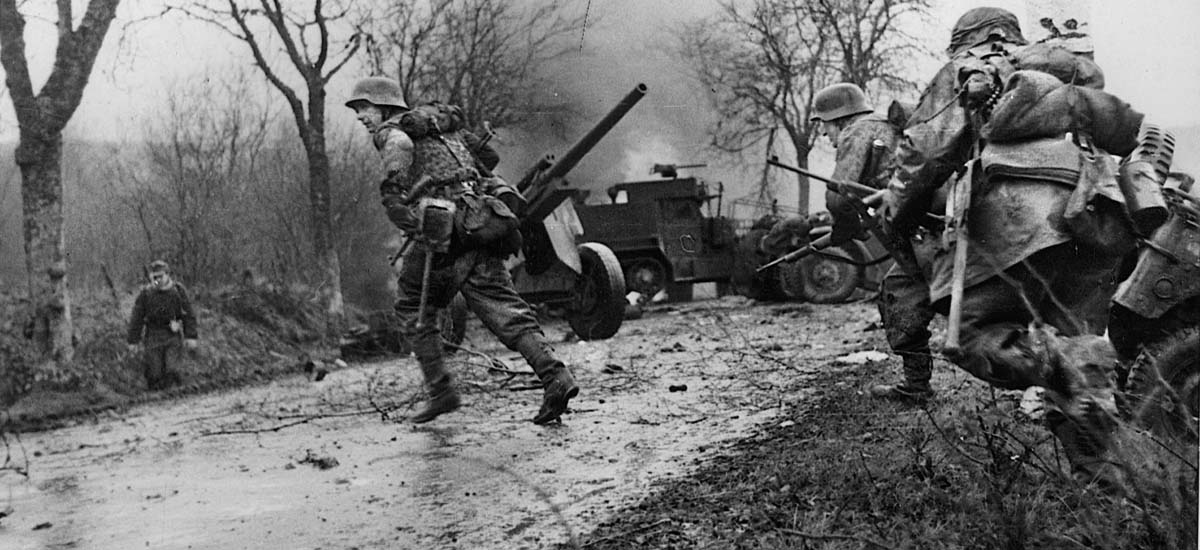
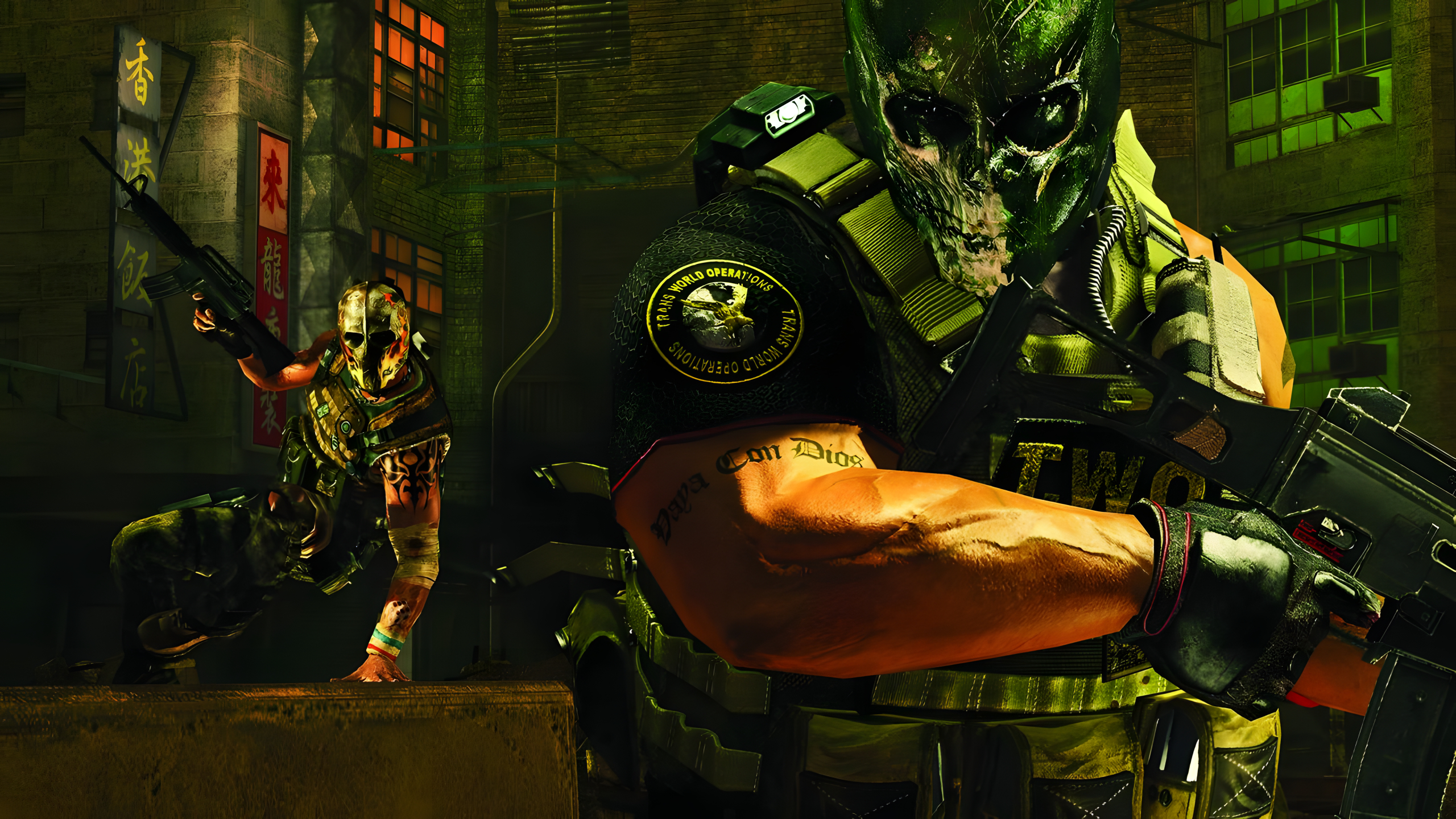
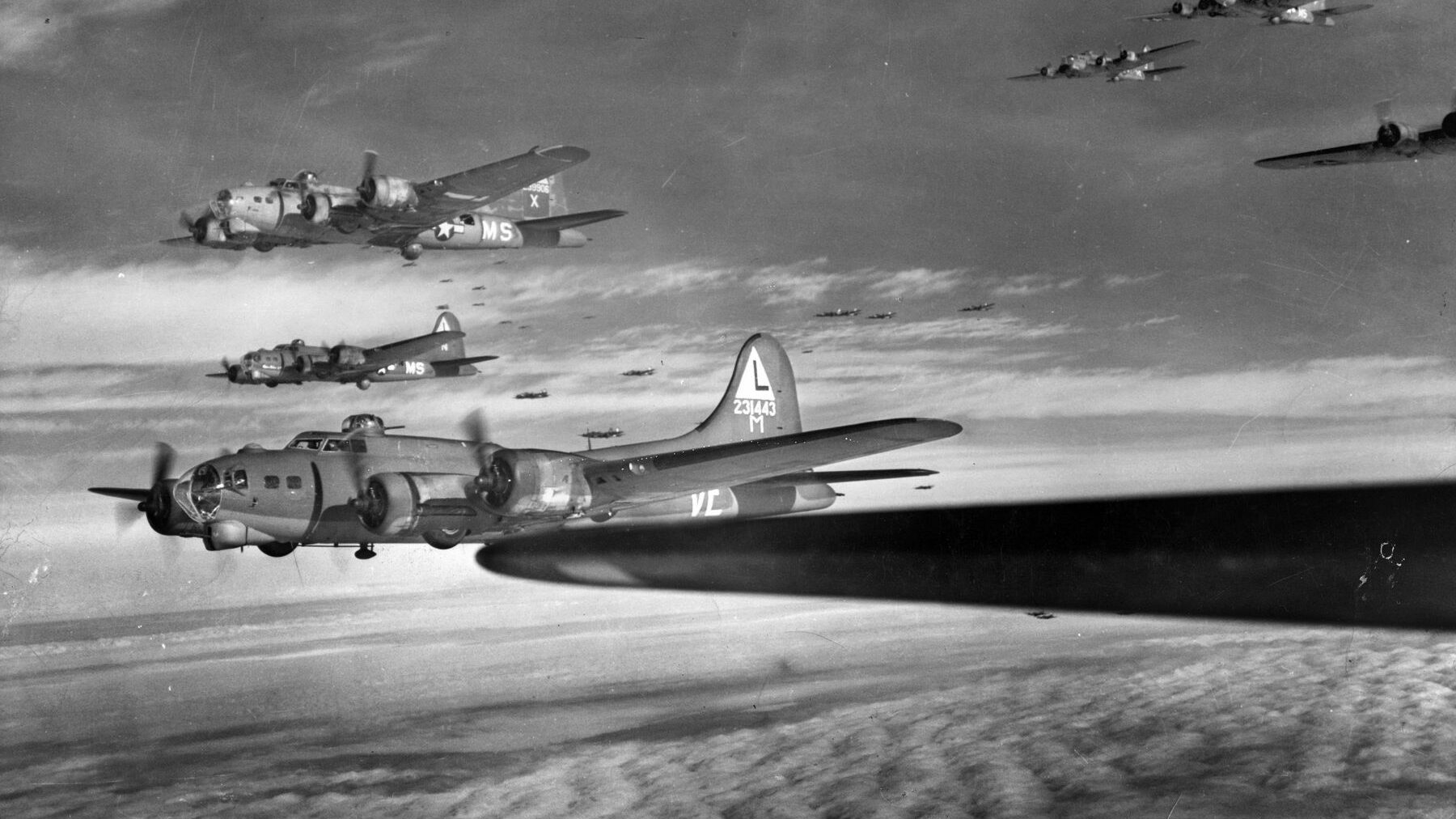
Join The Conversation
Comments
View All Comments